Abstract
Responding under fixed-interval schedules usually generates either scalloped or break-and-run cumulative records. Earlier, it was generally accepted that the characteristic pattern was the scallop, but in recent years there has been an increasing emphasis on the break-and-run pattern. The break-and-run pattern has been shown quantitatively to provide a good fit of certain fixed-interval patterns. In the present work, responding during fixed-interval 1000-second components of a multiple fixed-interval 1000-second fixed-ratio 50 responses schedule was examined in two rhesus monkeys. Even after responding had started in an interval, there was a high tendency for responding to accelerate over subsequent 100-second segments of the interval. In segments with responding, the rate increased from one segment to the next in 303 of 389 segments in one monkey and in 310 of 419 segments in the other. The size of the increase was substantial, the rate in the fifth segment after responding started being an average of 4.5 times higher than the rate in the first segment after responding started. Hence, the usual pattern of responding in individual intervals was of sustained and substantial acceleration, vindicating numerically the conclusion derived from inspection of the scalloped patterns of the cumulative records.
Keywords: FI schedule, mult FI FR, FI scallops, break-and-run analysis, rhesus monkeys
Full text
PDF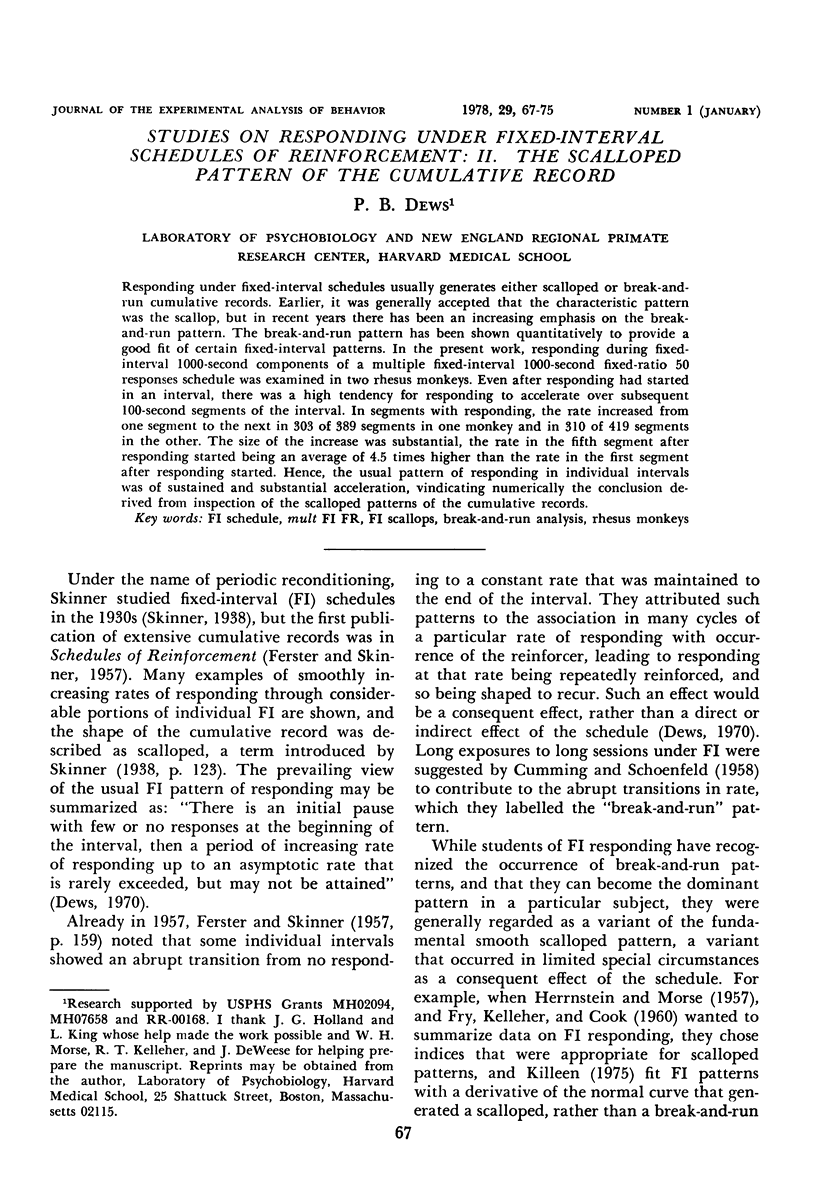
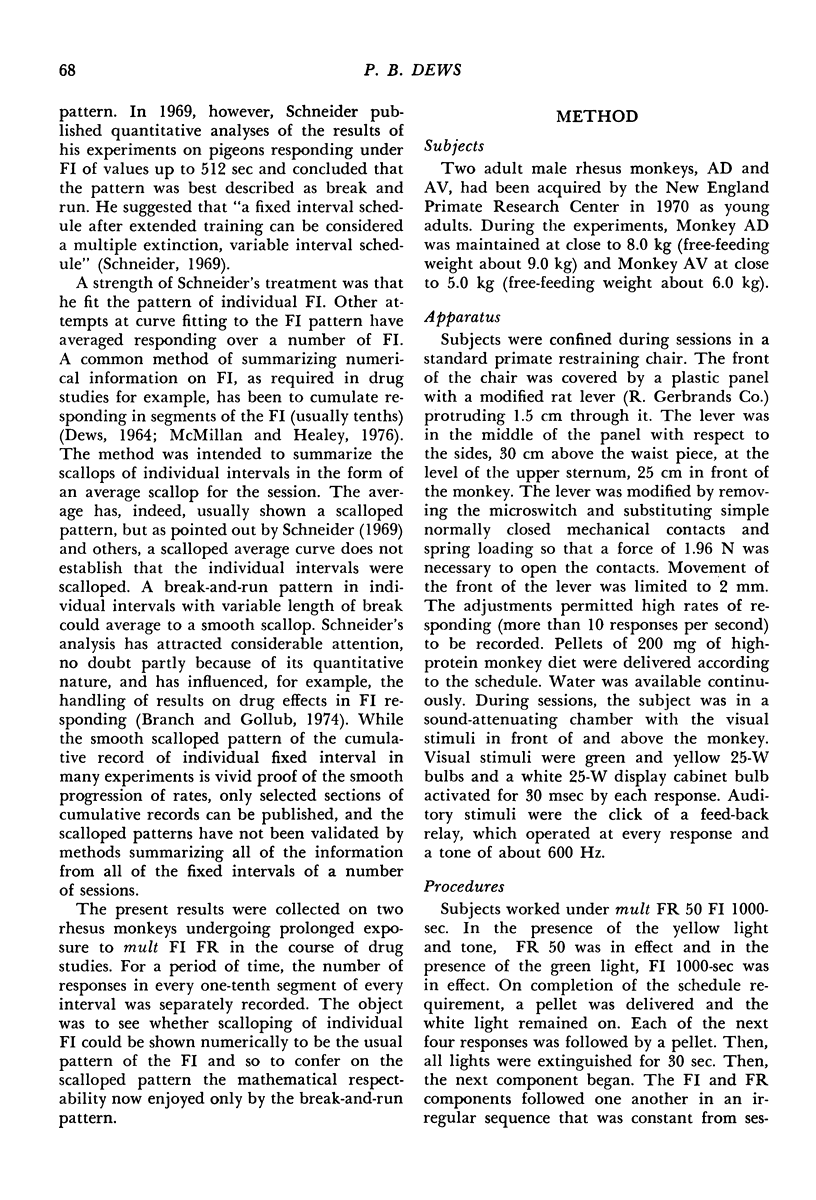
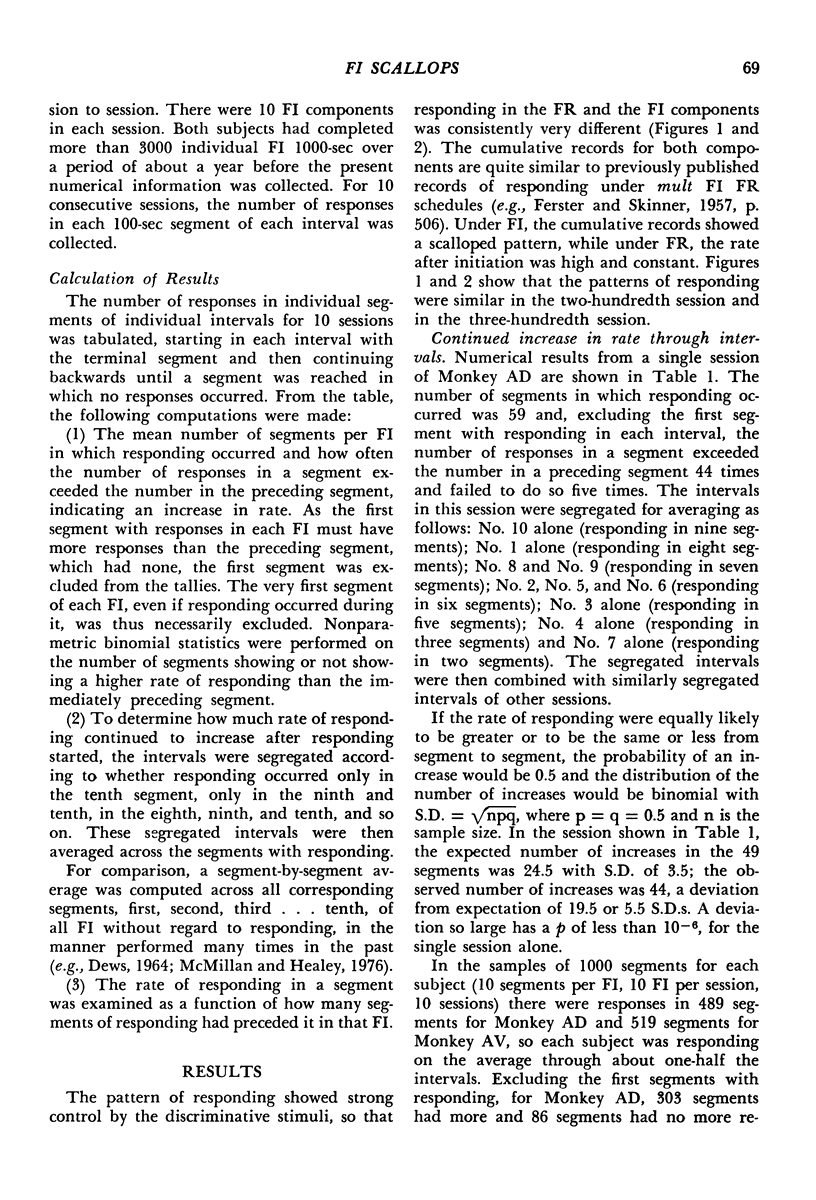
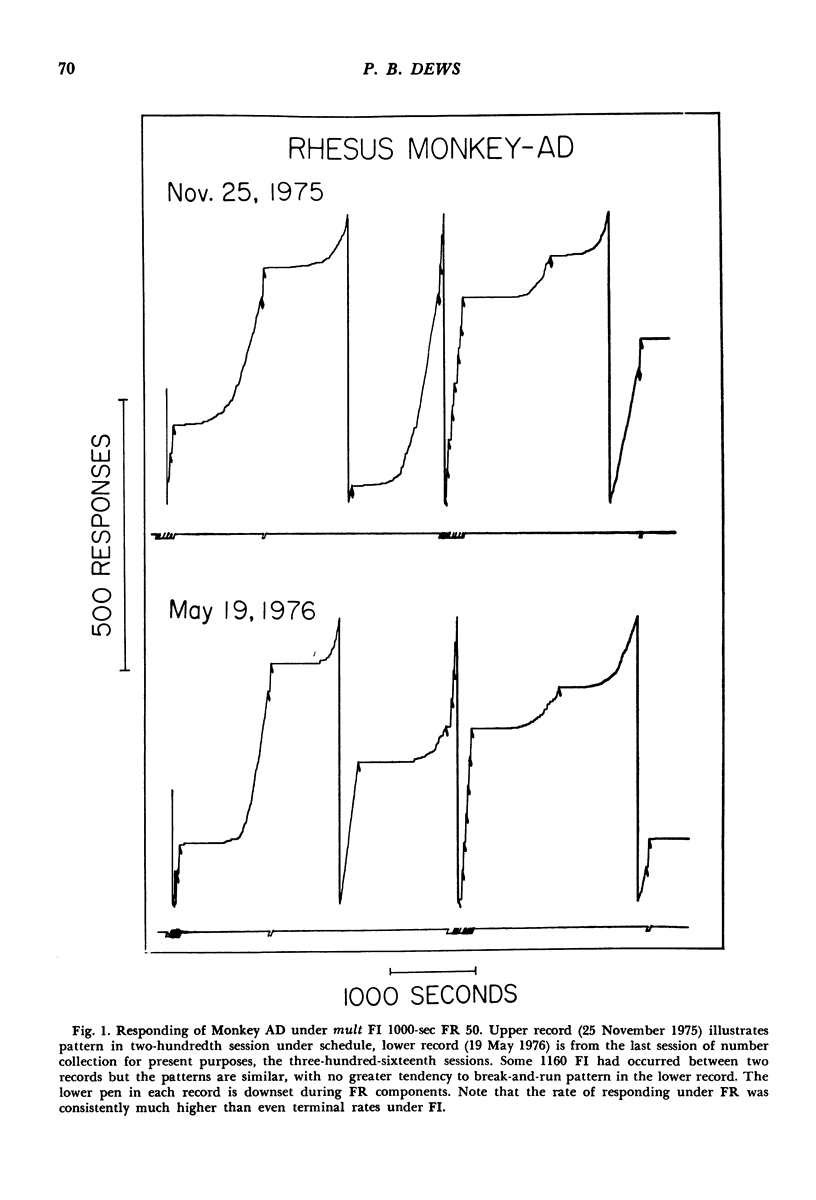
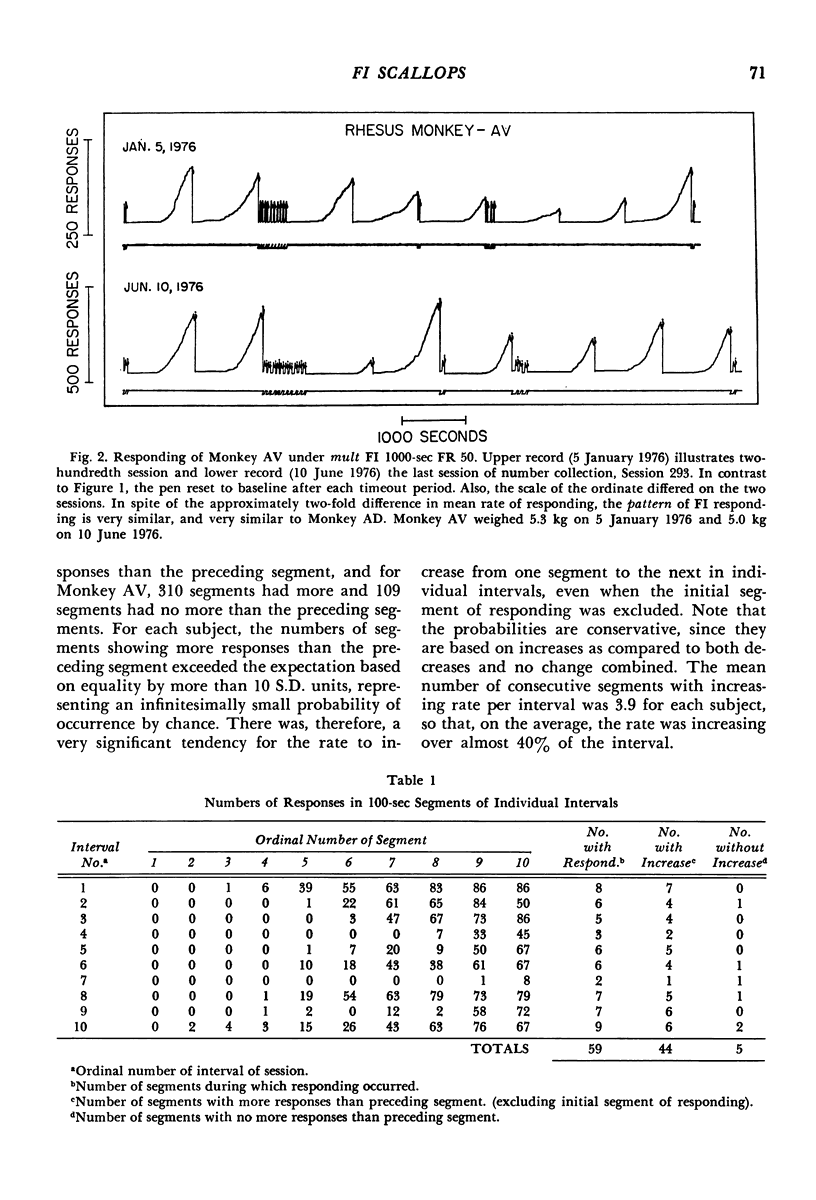
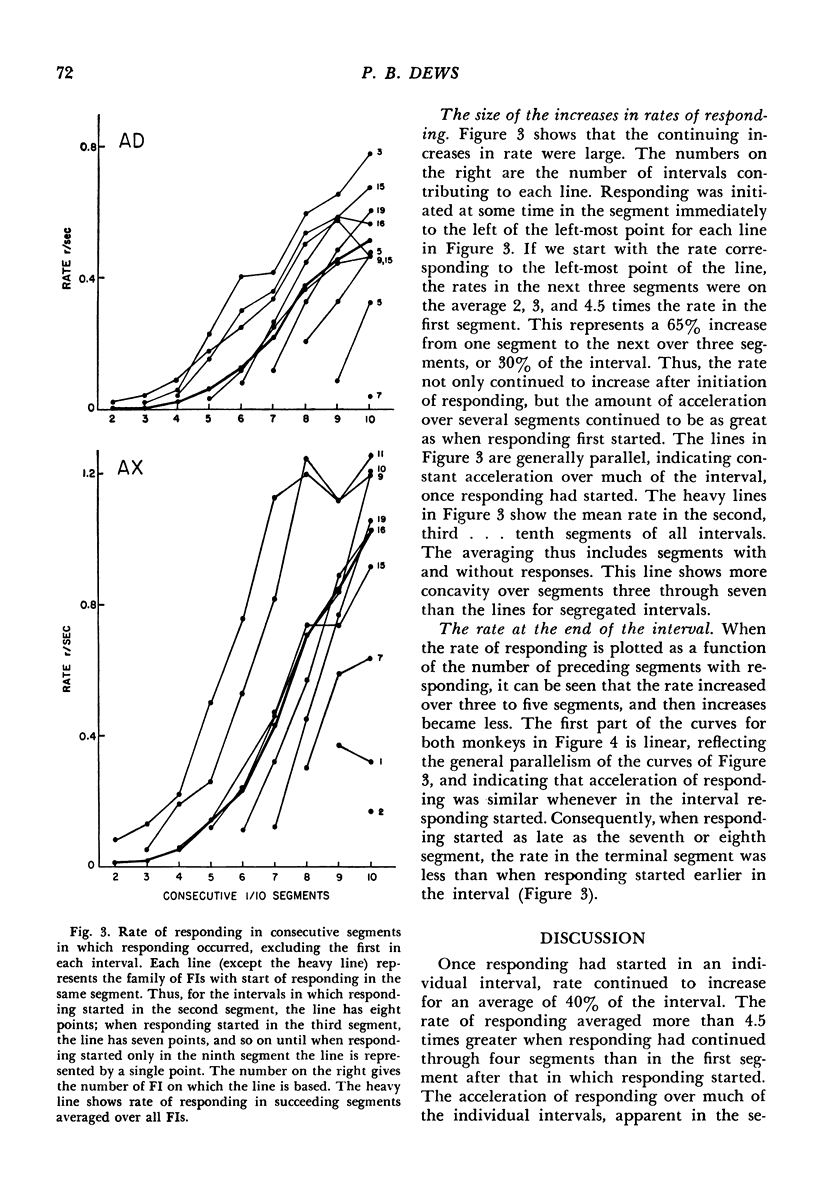
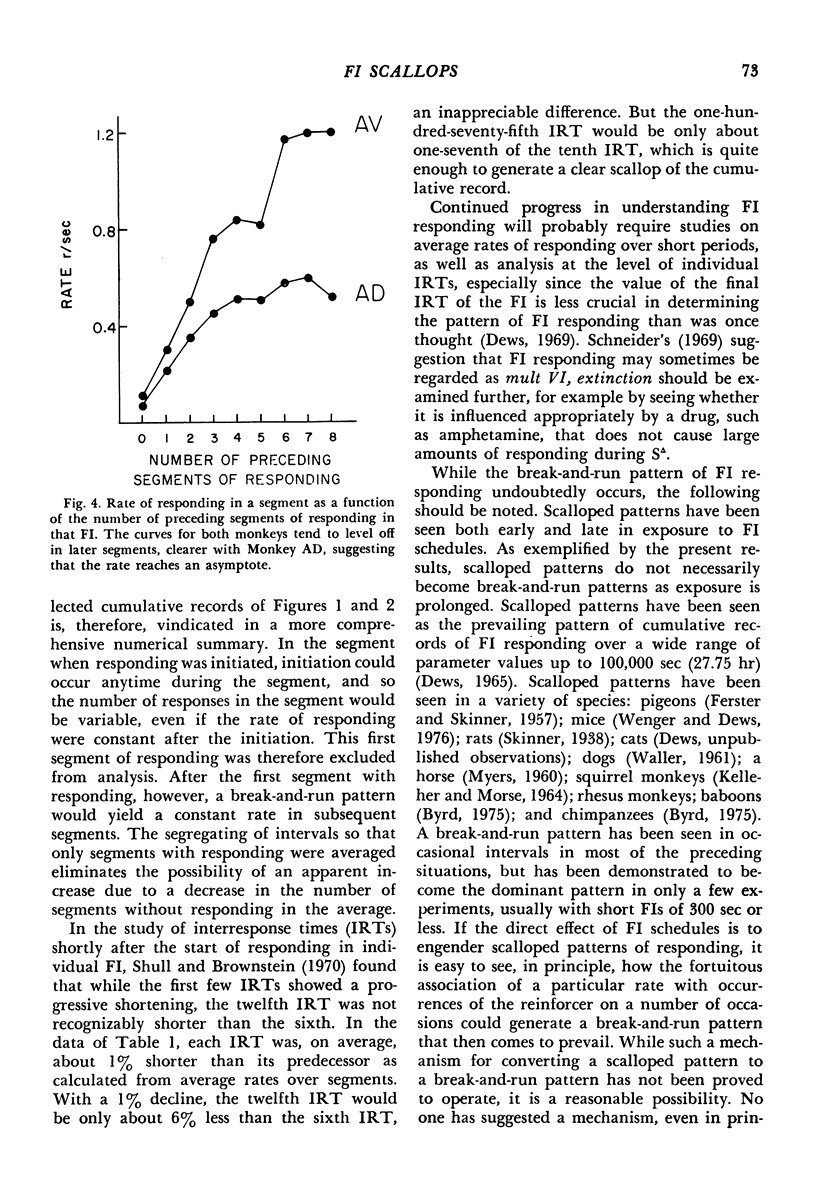
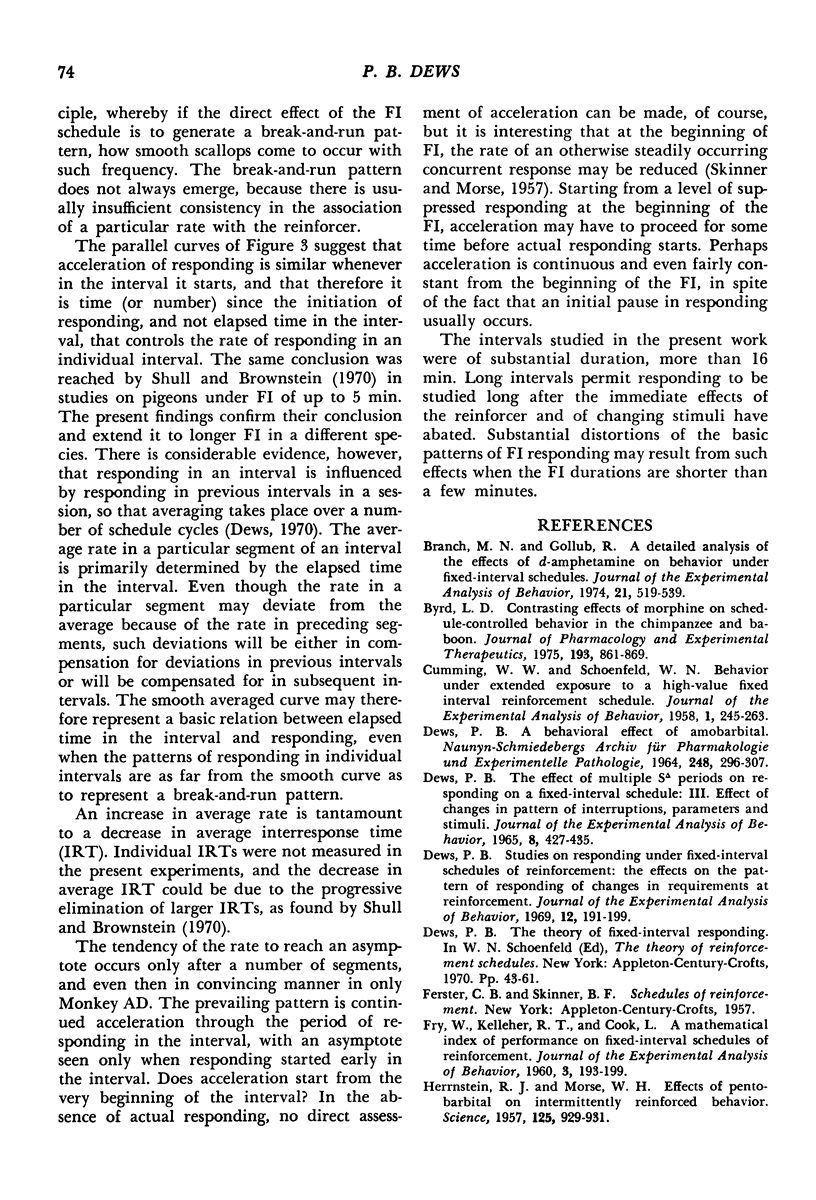
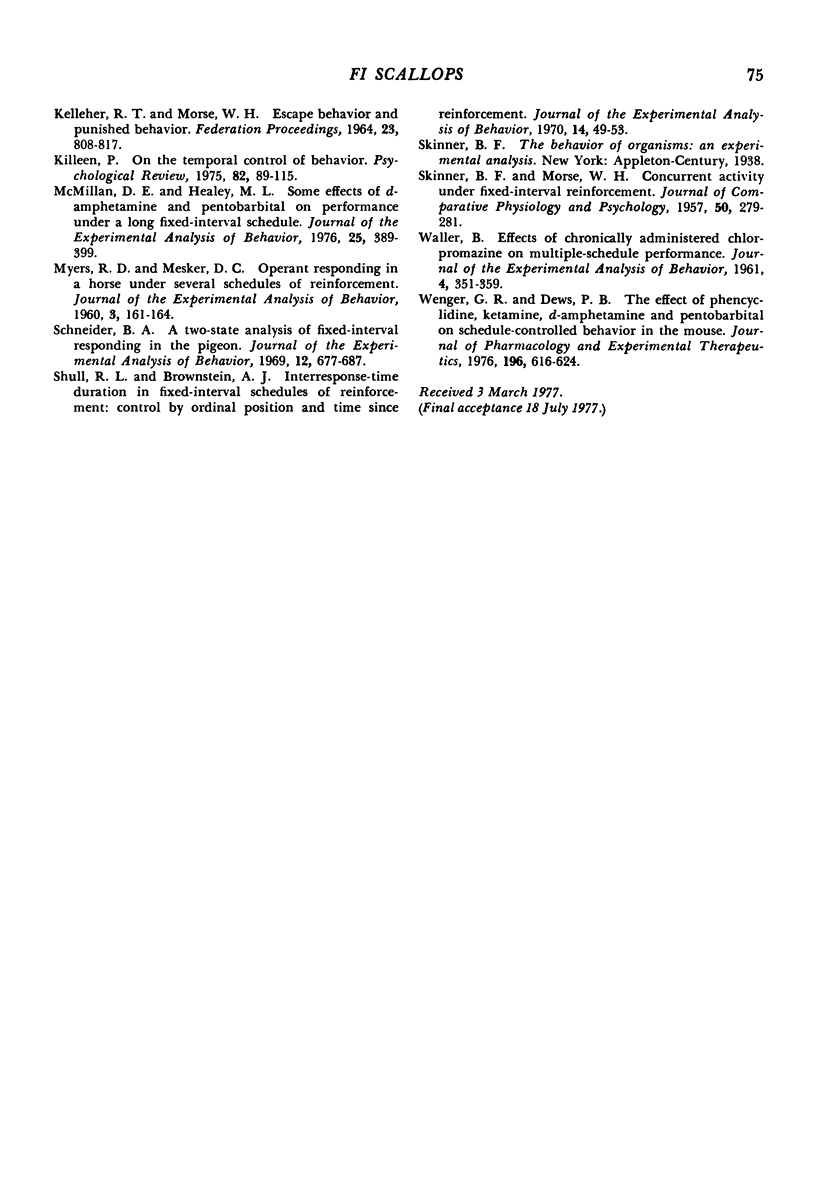
Selected References
These references are in PubMed. This may not be the complete list of references from this article.
- Branch M. N., Gollub L. R. A detailed analysis of the effects of d-amphetamine on behavior under fixed-interval schedules. J Exp Anal Behav. 1974 May;21(3):519–539. doi: 10.1901/jeab.1974.21-519. [DOI] [PMC free article] [PubMed] [Google Scholar]
- Byrd L. D. Contrasting effects of morphine on schedule-controlled behavior in the chimpanzee and baboon. J Pharmacol Exp Ther. 1975 Jun;193(3):861–869. [PubMed] [Google Scholar]
- Cumming W. W., Schoenfeld W. N. Behavior under extended exposure to a high-value fixed interval reinforcement schedule. J Exp Anal Behav. 1958 Aug;1(3):245–263. doi: 10.1901/jeab.1958.1-245. [DOI] [PMC free article] [PubMed] [Google Scholar]
- DEWS P. B. A BEHAVIORAL EFFECT OF AMOBARBITAL. Naunyn Schmiedebergs Arch Exp Pathol Pharmakol. 1964 Jun 22;248:296–307. doi: 10.1007/BF00246347. [DOI] [PubMed] [Google Scholar]
- Dews P. B. Studies on responding under fixed-interval schedules of reinforcement: the effects on the pattern of responding of changes in requirements at reinforcement. J Exp Anal Behav. 1969 Mar;12(2):191–199. doi: 10.1901/jeab.1969.12-191. [DOI] [PMC free article] [PubMed] [Google Scholar]
- Dews P. B. The effect of multiple S-delta periods on responding on a fixed-interval schedule: 3. Effect of changes in pattern of interruptions, parameters and stimuli. J Exp Anal Behav. 1965 Nov;8(6):427–435. doi: 10.1901/jeab.1965.8-427. [DOI] [PMC free article] [PubMed] [Google Scholar]
- FRY W., KELLEHER R. T., COOK L. A mathematical index of performance on fixed-interval schedules of reinforcement. J Exp Anal Behav. 1960 Jul;3:193–199. doi: 10.1901/jeab.1960.3-193. [DOI] [PMC free article] [PubMed] [Google Scholar]
- HERRNSTEIN R. J., MORSE W. H. Effects of pentobarbital on intermittently reinforced behavior. Science. 1957 May 10;125(3254):929–931. doi: 10.1126/science.125.3254.929-a. [DOI] [PubMed] [Google Scholar]
- KELLEHER R. T., MORSE W. H. ESCAPE BEHAVIOR AND PUNISHED BEHAVIOR. Fed Proc. 1964 Jul-Aug;23:808–817. [PubMed] [Google Scholar]
- MYERS R. D., MESKER D. C. Operant responding in a horse under several schedules of reinforcement. J Exp Anal Behav. 1960 Apr;3:161–164. doi: 10.1901/jeab.1960.3-161. [DOI] [PMC free article] [PubMed] [Google Scholar]
- McMillan D. E., Healey M. L. Some effects of delta-amphetamine and pentobarbital on performance under a long fixed-interval schedule. J Exp Anal Behav. 1976 May;25(3):389–399. doi: 10.1901/jeab.1976.25-389. [DOI] [PMC free article] [PubMed] [Google Scholar]
- SKINNER B. F., MORSE W. H. Concurrent activity under fixed-interval reinforcement. J Comp Physiol Psychol. 1957 Jun;50(3):279–281. doi: 10.1037/h0047021. [DOI] [PubMed] [Google Scholar]
- Schneider B. A. A two-state analysis of fixed-interval responding in the pigeon. J Exp Anal Behav. 1969 Sep;12(5):677–687. doi: 10.1901/jeab.1969.12-677. [DOI] [PMC free article] [PubMed] [Google Scholar]
- Shull R. L., Brownstein A. J. Interresponse time duration in fixed-interval schedules of reinforcement: control by ordinal position and time since reinforcement. J Exp Anal Behav. 1970 Jul;14(1):49–53. doi: 10.1901/jeab.1970.14-49. [DOI] [PMC free article] [PubMed] [Google Scholar]
- WALLER M. B. Effects of chronically administered chlorpromazine on multiple-schedule performance. J Exp Anal Behav. 1961 Oct;4:351–359. doi: 10.1901/jeab.1961.4-351. [DOI] [PMC free article] [PubMed] [Google Scholar]
- Wenger G. R., Dews P. B. The effects of phencyclidine, ketamine, delta-amphetamine and pentobarbital on schedule-controlled behavior in the mouse. J Pharmacol Exp Ther. 1976 Mar;196(3):616–624. [PubMed] [Google Scholar]


